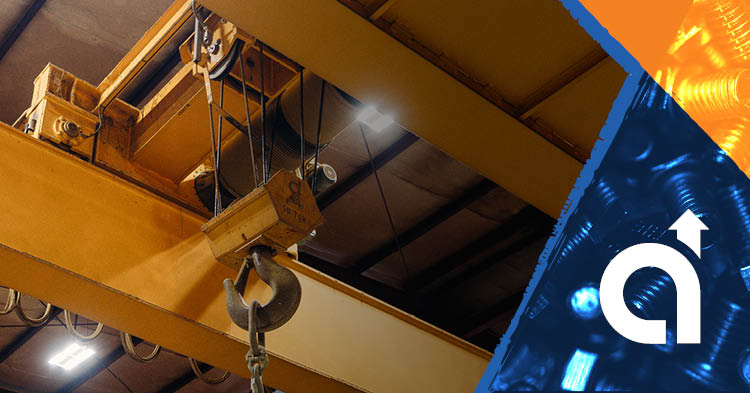Discover the Various Types of Cranes and Their Unique Features to Find the Perfect Solution for Your Industrial Requirements
Understanding Single and Double Girder Cranes
When it comes to industrial lifting solutions, single and double girder cranes are fundamental options that cater to different needs. Single girder cranes are designed for lifting lighter loads such as light machinery, raw materials, and pallets of supplies. These cranes are efficient and take up less room above the runway girders, making them suitable for spaces with height restrictions.
On the other hand, double girder cranes provide a more robust solution for heavier loads. With the trolley positioned between the dual bridge girders, these cranes can lift loads to greater heights. This configuration also allows for easier maintenance access. Depending on the headroom available, you can choose between top running or underhung trolley configurations. Top running cranes offer a greater lifting height, making them ideal for applications that require lifting objects to significant elevations.
Learn more about Single vs. Double Girder Cranes on our YouTube channel!
The Advantages of Overhead Cranes
Overhead cranes, also known as bridge cranes, are a staple in many industrial settings due to their ability to move independently along a fixed runway. These cranes are ideal for environments where lifting and moving heavy loads across long distances is required. Overhead cranes are commonly used in manufacturing plants, warehouses, and assembly lines.
One of the significant advantages of overhead cranes is their ability to optimize space. By moving loads along a fixed path, they free up floor space, making the work environment more efficient and less cluttered. Additionally, overhead cranes can be customized to meet specific operational needs, including varying load capacities and lifting heights.
Exploring the Versatility of Gantry Cranes
Gantry cranes are supported by their own frame and typically run along the ground on a track system or wheels. This design offers a versatile and cost-effective alternative to overhead cranes. Gantry cranes are particularly advantageous in situations where the construction of an elevated runway is not feasible or too expensive.
The mobility of gantry cranes makes them suitable for a wide range of tasks. They can be moved to different locations within a facility or even to different job sites, providing flexibility that fixed overhead cranes cannot offer. This adaptability makes gantry cranes an excellent choice for construction sites, shipyards, and outdoor projects where lifting needs may vary.
The Unique Benefits of Jib Cranes
Jib cranes are known for their flexibility and ease of use. These cranes are fixed on a pivot that allows them to rotate, and they can be mounted on a wall or to a base structure on the ground. Jib cranes are typically smaller in size, which makes them suitable for a wide array of applications, particularly in confined spaces.
The lifting capacity of jib cranes may be less than that of other crane types, but their versatility more than compensates for this limitation. Jib cranes are ideal for tasks that require precise, repetitive lifting and positioning, such as in workshops, assembly lines, and small warehouses. Their ability to pivot and rotate makes them highly adaptable to various industrial settings.
Single Failure Proof Cranes: Maximum Security for Critical Loads
For industries that handle highly critical and valuable loads, single failure proof cranes offer the highest level of security. These cranes are designed to lift critical loads such as spent nuclear fuel, rockets, and high-value objects like satellites. The unique feature of single failure proof cranes is their ability to maintain the lifted load even if any single component fails.
This level of reliability is crucial in industries where the failure of lifting equipment can result in catastrophic consequences. By ensuring that the load remains secure, single failure proof cranes provide peace of mind and enhance safety in operations involving sensitive and high-stakes materials.
Tailoring Your Crane Choice to Specific Industrial Tasks
Selecting the right crane for your industrial needs involves understanding the specific requirements of your tasks. Each type of crane discussed—single and double girder cranes, overhead cranes, gantry cranes, and jib cranes—offers unique features and advantages that cater to different applications.
Consider factors such as load capacity, lifting height, space constraints, and mobility needs when choosing a crane. By aligning the crane’s capabilities with your operational requirements, you can ensure efficient and safe lifting operations. Consulting with experts and leveraging the extensive selection available at American Crane & Equipment Corporation can help you find the perfect crane tailored to your exact specifications.
In conclusion, understanding the various types of cranes and their unique features is essential for making an informed decision. Whether you need the efficiency of a single girder crane, the robustness of a double girder crane, the versatility of a gantry crane, the flexibility of a jib crane, or the security of a single failure proof crane, there is a solution that fits your needs. Explore your options and elevate your industrial operations with the right crane choice.
Contact us today and we will help you discover what solution works best for your needs!


